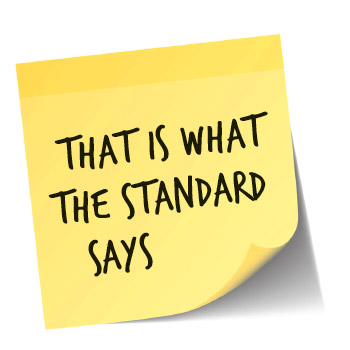The standard is not a law and therefore not legally binding. However, if any issues concerning the reliability of an assembly require legal clarification, the user may probably be confronted at court with the question of why the assembly does not meet state-of-the-art requirements or why the standard was not complied with. Seen from a different perspective, companies adhering to the standard can also be discharged by providing documentation and proof of compliance.
What benefits do you see in this development?
Gudrun Weigel, Engineering Director and Member of the Executive Board:
The new standard takes into account the complexity of adhesive bonding and creates the basis for professional and safety-related execution of bonding tasks. The users of adhesives get precise and clearly expressed instructions on organizational actions to take in preparation of bonding processes, allowing them to produce high-quality adhesive bonds that are highly reliable in use.
Do you see any disadvantages in the new DIN 2304 standard?
Weigel: First of all, it means increased bureaucracy. This, however, applies to organizational measures and documentation needed to ensure reliable manufacturing processes. Users are requested to review their processes, to invest in staff training and development, and to prove and document that the design complies with the strength requirements. But these are constructive measures to ensure efficient bonding, which, in the medium term, will help save costs.
Do you support your customers in implementing the standard?
Weigel: The organization of processes needs, of course, to be implemented by the customers themselves. But we do expect more requests for advice and assistance regarding the selection of adhesives and materials, the constructive design, the discussion of suitable steps for efficient production, and for information on reproducible production processes. These issues, however, have always been part of our customer services. And we provide additional assistance by offering training courses to their technical staff at our DELO Academy.
The standard provides four steps to create structured bonding processes in the companies.
In the fields of design, planning, manufacturing, and maintenance, the companies employ professionally trained staff for adhesive bonding supervision.
Professional bonding requires availability of appropriate workplaces and manufacturing facilities meeting the requirements in terms of technology, work safety, and environmental protection.
With the assistance of the adhesive bonding supervisors, the design engineer or the person responsible for the component evaluates the bonded joint in consideration of the potential effects of its failure. This is done by categorizing it into safety classes, ranging from S1 (high) to S4 (none).
Both parties have to proof that the bonded joint meets the requirements throughout the life cycles and the intended period of use and that the bonding strength is greater than expected the expected stress.
Modern industrial adhesives are high-tech products that, if properly used, can ensure smooth production processes. If a bond fails during later use, this is usually due to errors made in the customer’s production process. According to experts, about 90 percent of the errors occurring are based on insufficient knowledge of bonding. This issue is addressed in the new DIN 2304 standard “Adhesive bonding technology – Quality requirements for adhesive bonding processes“, applicable since spring 2016.
It defines rules for quality assurance in both technical and organizational terms, thus structuring the process of bonding in industrial use. This “detour” on the way to quality assurance is required for special processes such as bonding, since the quality of a bond cannot be inspected by non-destructive testing.
The DIN 2304 standard defines the state of the art for proper adhesive bonding of structural / load-bearing joints, applicable across all industries and products, to all adhesive classes and material combinations. It applies to all stages of the production chain, from development to manufacturing to maintenance.
DIN 2304 is the first generally accepted standard for quality requirements in adhesive bonding technology. So far, only specific standards such as DIN 6701 for adhesive bonding in rail vehicle construction, have been used. This internationally accepted standard has been in force for ten years and is currently being converted into an EN standard, which might as well happen to the new DIN 2304 standard for adhesive bonding technology.












